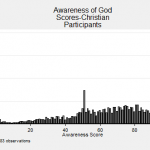There’s a great article in Christianity Today about the changing nature of conversion. Because it’s so important in Evangelical circles now, it’s easy to assume, and assume falsely, that it’s always taken the same form. This enlightening article spells out how our understanding of it has, and is, changing.
****
The New Conversion: Why We ‘Become Christians’ Differently Today
Evangelicals are undergoing a sea change understanding when it comes to this pivotal moment in the believer’s life.
Gordon T. Smith
It is not be an overstatement to say that evangelicals are experiencing a “sea change”—a paradigm shift—in their understanding of conversion and redemption, a shift that includes the way in which they think about the salvation of God, the nature and mission of the church, and the character of religious experience. Although there is no one word to capture where evangelicals are going in this regard, there is a word that captures what they are leaving behind: revivalism.
Revivalism is a religious movement heir to both the 17th-century Puritans and the renewal movements of the 18th century, but one that largely emerged in the 19th century. It was broadly institutionalized in the 20th century in the conservative denominations in North America as well as in parachurch and mission agencies that then in turn spread the movement within North America and globally. For evangelicals up until at least a generation ago, the language of conversion was the language of revivalism; it shaped and in many ways determined their approach to worship, evangelism, and spiritual formation.
Evangelicalism is certainly not monolithic; the points at which evangelicals differ among themselves is significant—both Baptists and Pentecostals see themselves as coming under this umbrella, along with Mennonites, and then also Calvinists and Wesleyans. But for all their diversity, the way in which they spoke of conversion and redemption was remarkably similar. Evangelicals took for granted that the language and categories of revivalism were the language and categories of the New Testament. Conversion was viewed to be a punctiliar experience: persons could specify with confidence and assurance the time and place of their conversion, by reference, as often as not, to the moment when they prayed what was typically called “the sinner’s prayer.”
The focus of conversion was the afterlife: one sought salvation so that one could “go to heaven” after death, and the assumption was that “salvation” would lead to disengagement from the world. Once converted, the central focus of one’s life would be church or religious activities, particularly those that helped others come to this understanding of salvation that assured them of “eternal life” after death. Life in the world was thought to hold minimal significance. What counted was the afterlife. And if one had “received Christ,” one could be confident of one’s eternity with God. Conversion was isolated from the experience of the church. Indeed, it was generally assumed that a person would come to faith outside of the church and then be encouraged, after conversion, to join a church community.
Thank you Jerry Park!











